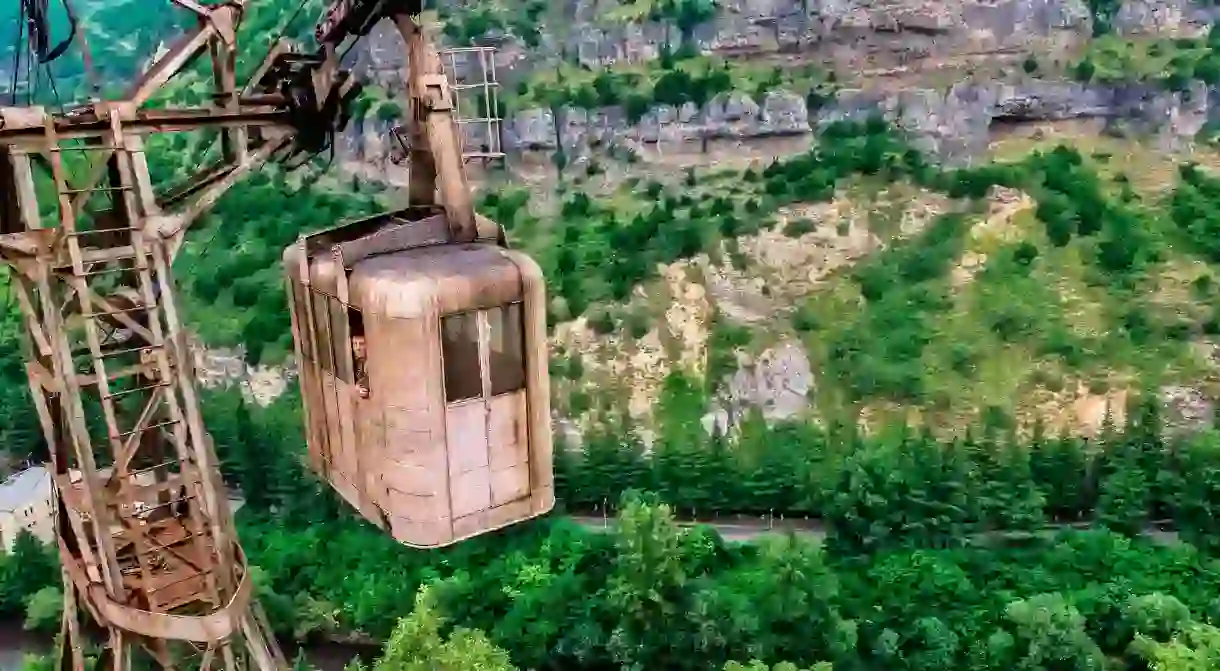A Ride On Stalin’s Rope Roads In Chiatura, Georgia

The Georgian mining town of Chiatura (Georgian: ჭიათურა) is located in the Imereti region on the banks of the Qvirila River. Surrounded by steep cliffs in a wildly industrial setting, it is famous for its Soviet era aerial tramways, which locals call the ‘Kanatnaya Doroga,’ or ‘rope road.’ The extensive cable car network is a relic from Soviet times, and since then, it has been used as a main transportation network, connecting every corner of this mining town.
Stalin’s rope roads date back to the 1950s, when the first planners began construction during the Soviet era. The Soviets invested in a real ‘working paradise’ in the present gorge, with Chiatura’s manganese production rising to 60% of global output by 1905.

The story goes that in the early 20th century, when the U.S.S.R annexed Georgia, the authorities of the Soviet Union wished to extract the vast quantities of manganese deposits beneath the Chiatura gorge and needed a transport system to manage this project.

The main purpose and utility of the cable car system was to serve as transportation for the workers around the valley and all the way up to mines. These would become a useful form of transportation due to the extreme geography of the area, which includes steep valley slopes, river crossings, and gorges.

Today, while few of the lines have rusted away (more than half a century after their construction), 17 of the aging tramways remain rusted, but are in full service and are used daily by locals to transport themselves through the challenging terrain. Some use them as the main transport to the mines. At the eastern side of the town, the lines operate 24 hours a day.

Many concerns have been raised regarding the rusted infrastructure and the danger mine workers are putting themselves in by continuing to use this form of transportation — a daily journey on this tram involves a criss-cross through the valley on Stalin’s rope roads. Nevertheless, the Georgian government does not seem to want to renovate or replace the cable car system, which is still the main form of transport used in Chiatura.














